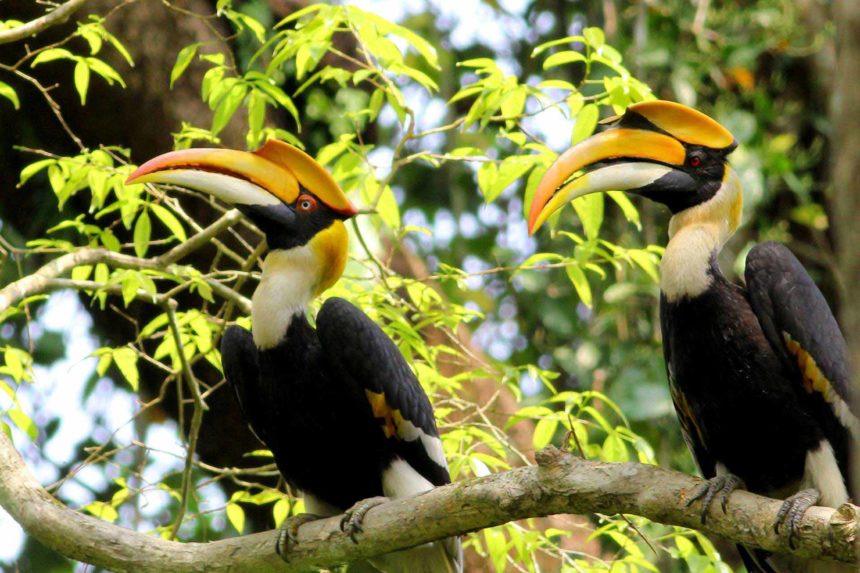Nestled at the foothills of the Eastern Himalayas, Manas National Park is a gem of biodiversity and natural beauty. Recognized as a UNESCO World Heritage Site, a Project Tiger Reserve, an Elephant Reserve, and a Biosphere Reserve, Manas is a haven for wildlife enthusiasts, nature lovers, and anyone seeking a deep connection with the wilderness. Let’s embark on a virtual journey to discover the wonders of Manas National Park.
A Brief Overview
Manas National Park, located in the Indian state of Assam, covers an area of 950 square kilometers. It was declared a national park in 1990 and a UNESCO World Heritage Site in 1985 due to its exceptional biodiversity and landscapes. The park is named after the Manas River, which flows through it, adding to the scenic beauty and supporting its diverse ecosystems.
Flora and Fauna
Manas is home to an astonishing variety of flora and fauna, making it one of India’s most important conservation areas. The park’s rich biodiversity includes:
Mammals:
Manas boasts over 55 species of mammals, including the Bengal tiger, Asian elephant, Indian rhinoceros, and the rare and endangered pygmy hog. The park is also known for the golden langur, a primate species found only in this region.
Birds:
Birdwatchers will find paradise in Manas, with more than 450 species recorded. Notable species include the great hornbill, wreathed hornbill, and the endangered Bengal florican.
Reptiles and Amphibians:
The park is also home to numerous reptiles and amphibians, including the gharial, Indian python, and various species of frogs and toads.
Flora:
The diverse plant life includes tropical semi-evergreen forests, mixed moist and dry deciduous forests, and extensive grasslands, providing habitats for the park’s varied wildlife.
Key Attractions
1. Jeep Safaris:
Exploring Manas by jeep is a thrilling experience. Safaris typically take visitors deep into the park, offering opportunities to spot tigers, elephants, and other wildlife. The early morning and late afternoon safaris are particularly rewarding.
2. Elephant Rides:
For a more unique perspective, elephant rides are available. Riding through the park on the back of an elephant allows visitors to get closer to wildlife without disturbing the natural habitat.
3. River Rafting:
The Manas River offers excellent opportunities for river rafting. This adventure not only provides a rush of adrenaline but also a chance to see the park from a different vantage point.
4. Bird Watching
With its incredible diversity of bird species, Manas is a birdwatcher’s haven. Early morning walks and dedicated bird-watching tours can be arranged for avid ornithologists.
Conservation Efforts
Manas has faced significant challenges, including poaching and political unrest. However, dedicated conservation efforts by the government, local communities, and international organizations have helped restore the park’s glory. Anti-poaching initiatives, habitat restoration projects, and community-based conservation programs are ongoing to ensure the park’s protection and sustainability.
Best Time to Visit
The ideal time to visit Manas National Park is between October and April when the weather is pleasant, and the wildlife is most active. During this period, the park’s lush green landscapes and vibrant fauna provide a captivating experience.
How to Get There
Manas National Park is accessible by road, rail, and air:
By Air: The nearest airport is Lokpriya Gopinath Bordoloi International Airport in Guwahati, about 180 km away. From there, you can hire a taxi or take a bus to reach the park.
By Rail: The nearest railway station is Barpeta Road, approximately 40 km from the park.
By Cruise: MV Mahabaahu offers a 7 nights pure wildlife cruise, 10 nights downstream wildlife and culture cruise and 11 nights upstream wildlife and culture cruise which covers Manas National Park and the other two parks viz. Nameri National Park and the 3 ranges of Kaziranga National Park.
Conclusion
Manas National Park is not just a destination; it’s a journey into the heart of wild India. Its breathtaking landscapes, rich biodiversity, and the thrill of encountering some of the world’s most magnificent creatures make it a must-visit for anyone passionate about nature and wildlife. Whether you’re a seasoned wildlife enthusiast or a curious traveler, Manas promises an unforgettable adventure.
Pack your bags, prepare your binoculars, and set off on a journey to explore the untamed beauty of Manas National Park onboard MV Mahabaahu – Check available dates here.

















Leave a Reply
You must be logged in to post a comment.